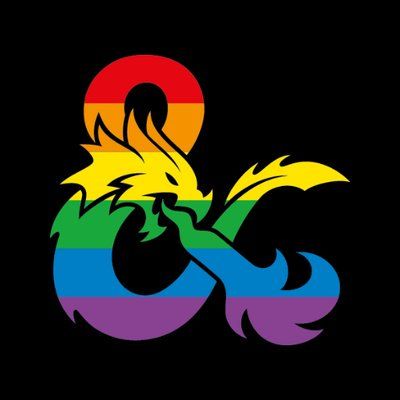Building an LGBT inclusive table

There have been people on the LGBT spectrum playing D&D since its beginnings, and the benefits for identity exploration, wish fulfillment, and escapism are huge, but all of that can only be reaped at a table that celebrates and is intentional about it's inclusivity. This is something that, at my various tables, I have very intentionally pursued, and by creating a table culture that feels safe, I have had several students feel comfortable enough to come out to me personally or the group, with the response being generally nonchalant in the latter scenario.
There are three key things I've found that are key to building a LGBT friendly table- Respect, representation, and rules.
The first, respect, should be explicitly built into the table culture and rules. The most obvious part of this is respecting pronouns. If someone gets a pronoun of another player wrong, as the DM, your job is to firmly fix it. Player: “So he's gonna do this,” DM: “She.” Player: “Sorry, she.” Leave it at that if it's a first offense. Check the player who got misgendered to ensure they're ok, otherwise move on. If the misgendering continues, or appears intentional, then you need to stop it, and have an overt conversation about it, although I have not had this happen at one of my tables, and I think part of the reason is that I model the table culture to hold respecting one another as a highest priority, and come down on disrespect hard. It's in the rules, but I also do everything I can to model empathy, compassion, kindness, and ultimately respect, so it is a core part of the table, with the understanding that disrespect has no place here.
Next up is representation, and this is fun. Have gay NPCs. Have bisexual NPCs. Have trans NPCs. Have genderqueer NPCs. Have asexual NPCs. Be diverse in the gender and sexuality and relationships of your NPCs and how they appear in the world. Because of this, I've had three PCs get into same sex relationships, and two went terribly, (one was just a painfully bad first date that fell apart, one turned into a deeply toxic relationship due to the partner being a literal demon who felt stabbing was the ultimate expression of love,) but one actually is working out really well. One of the biggest NPCs is canonically bisexual, and if a PC decides to flirt, I'm always happy to have the NPC turn out to be attracted to them, no matter what the gender. And I think it's because of this representation that several of my clients have been comfortable enough to come out to me, to which my response is generally, “Cool!”
Finally, and this one is easy, rules. Implement your policy on zero harassment overtly. I use a general 'no harassment, we're all on the same team here,” sort of policy, which does a pretty good job setting up the culture of the table. That being said, I actively try to model checking in on people, making sure everyone is ok, and letting people know that they can always talk to me if they need to. One particularly fantastic moment happened recently, when a kid's PC betrayed the party to help his childhood friend, a villain, escape. The party ended up tying up both of them, and afterwards the PC that had betrayed the party spent the rest of the session snarling and ranting about how the rest of the party was awful, to the point where they gagged him to get him to shut up. Afterwards, I saw one of the other boys walk up to the boy whose PC had been ranting, and asked, “Hey man, you doing ok?” He responded, “Oh, sure- I was just role playing.” Here was the table's culture at work- this kid knew that his friend had been through an emotionally rough scene, and was checking up to make sure he was doing ok afterwards. With this understanding that we're all on the same team, it creates a culture where people check on each other, and are completely accepting, and it's something I'm very proud of the kids for embodying.
In closing, I'll share the story of one of my kids coming out. The kids were having a discussion of, if this were a horror movie, who would die first, which went like this.
“Well, in a horror movie, the black guy dies first, then the gay guy,”
“Oh, well I'm gay.”
“Oh, so see, you'd die first! Now, who'd die second, I wonder?”
His coming out to the group happened in under 10 seconds, and the impact was the same as if he had declared he likes apples over oranges- they literally moved on to the next topic without judgment, save that in the group's hypothetical horror movie, he would die first, and the conversation immediately moved on to who would die next, and a complex conversation about horror tropes and stereotypes. It was beautiful, and this is the type of table I want to see everywhere.